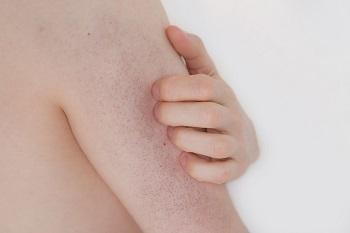Everything You Need to Know about Keratosis Pilaris
posted: Feb. 05, 2019.
 Could those rough, white bumps actually be Keratosis Pilaris?
Could those rough, white bumps actually be Keratosis Pilaris?
If you are dealing with rough patches of skin on your body, then you may be dealing with a condition known as keratosis pilaris. While this is a fairly common and nonthreatening dermatological issue it can be hard to effectively treat. Luckily, most cases of keratosis pilaris go away by the age of 30. However, find out everything you need to know about this condition and how to manage your symptoms properly.
Are you noticing any of these symptoms?
- Rough, scaly patches that are sometimes itchy
- White or red bumps that look like acne
- Bumps on the arms, legs, cheeks or butt
- An increase in symptoms during the winter
If you’ve said “yes” to any of these symptoms above, then your bumps may be the result of keratosis pilaris. Luckily, this isn’t a serious condition and often won’t require treatment. However, some people feel embarrassed by how their skin looks. If this is the case, then consult your dermatologist.
Keratosis Pilaris Treatments
There is no one treatment that effectively helps those with keratosis pilaris. However, your dermatologist might recommend a medicated exfoliant, a retinoid cream or gel, or laser treatment. While using these medications may improve the look of your skin, if you stop taking this medication there is a significant chance that the problem will return. The biggest issue with this dermatological condition is that it lasts for many years.
SelfCare Measures for Keratosis Pilaris
While your treatment options might not sound ideal, there are also some easy things you can do at home that can improve the look of your skin.
- Avoid scrubbing or rubbing your skin, which can further aggravate your condition.
- Always pat your skin dry and never rub. This will also help to maintain moisture.Apply a moisturizer after getting out of the shower. This can further help to improve the appearance of dry, irritated skin.
- Look for products with urea or lactic acid. Both of these ingredients can be found in over-thecounter skin care products and they remove excess keratin from the outermost layer of the skin.
Talk to your dermatologist about which prescription medications and lifestyle changes would improve your condition. Even though this condition isn’t serious you can still seek medical advice and treatments to help with your problem.

